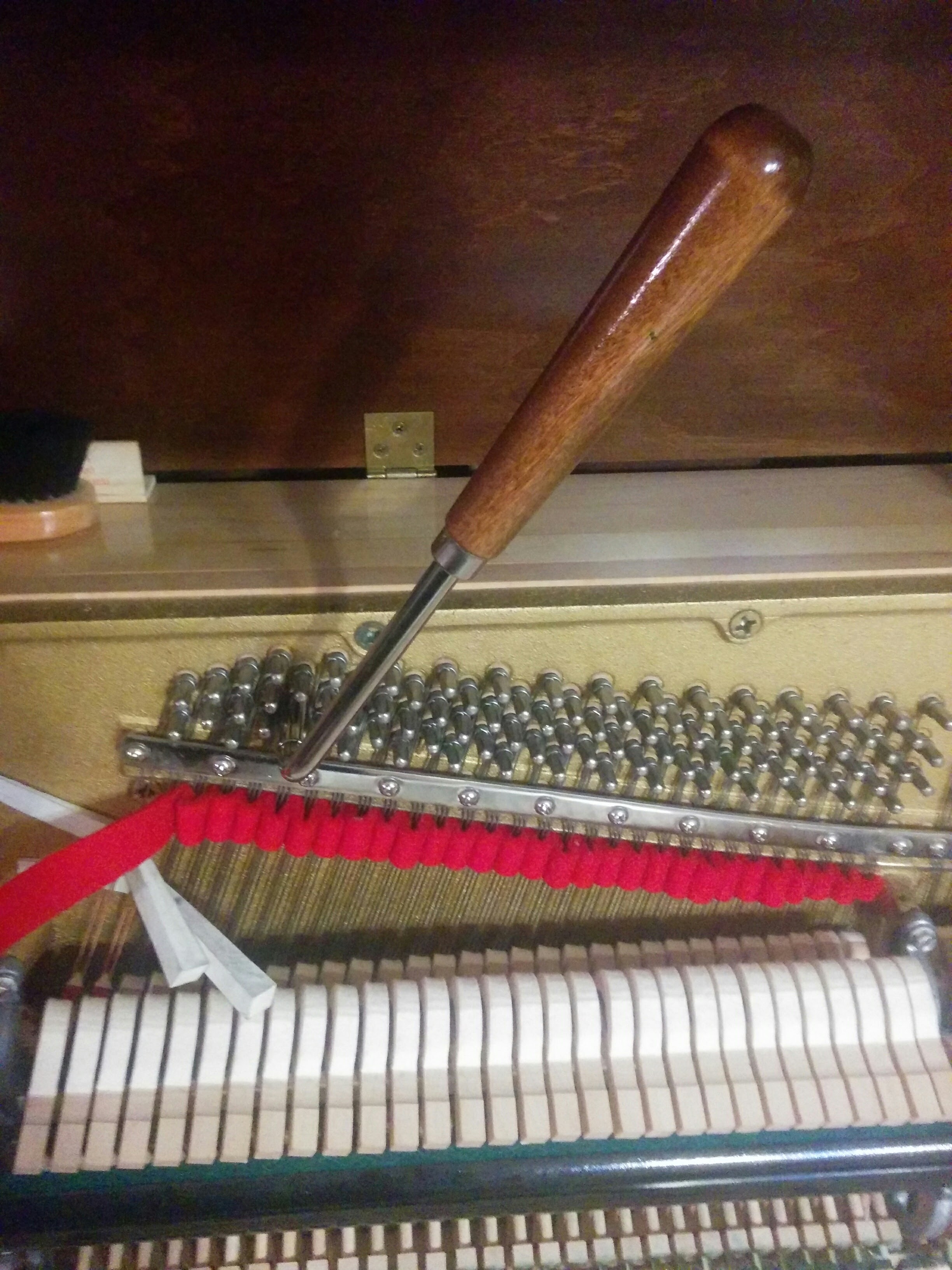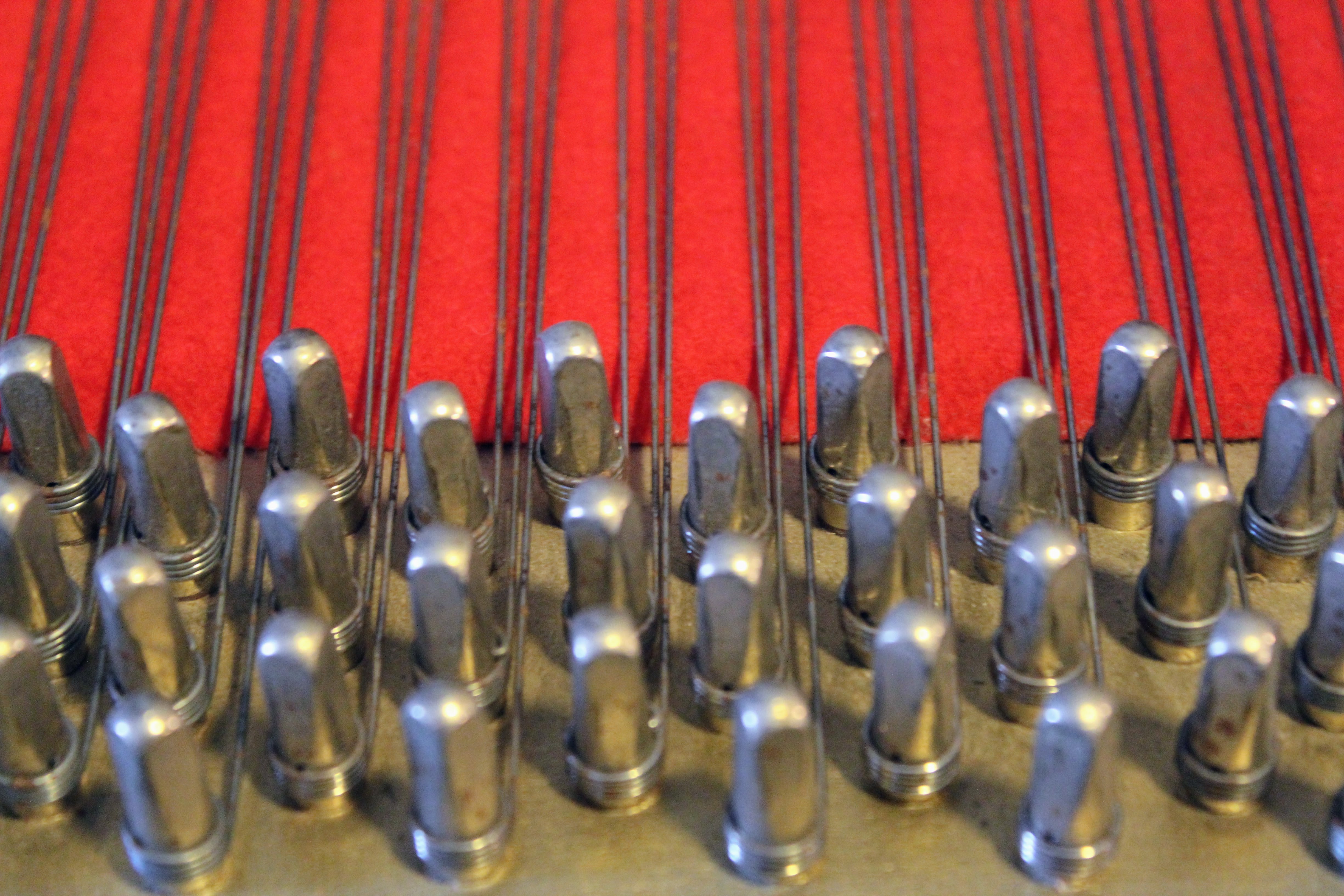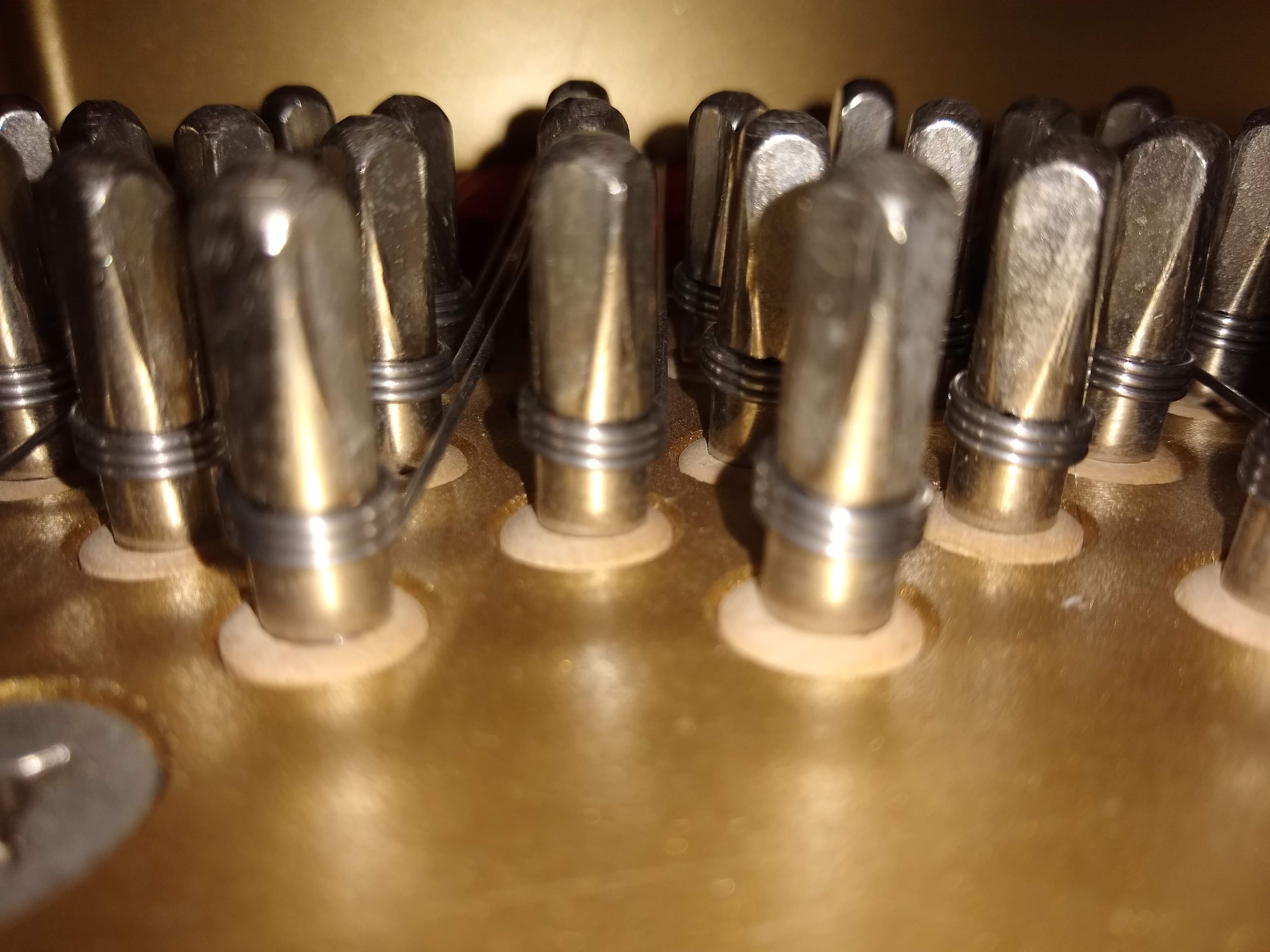
Restoring the Piano's Pitch
Restoring pitch to a piano goes by several names. "Pitch raise," or "re-pitch" are the most common, although there are other terms for the procedure as well. No matter what it's called, it refers to raising--or lowering--the pitch to a standard frequency level, usually 440 cycles per second at note number 37 (middle A) on the standard 88 note piano keyboard. Modern day pianos--those built after 1900--are built with this pitch level as the tonal frame of reference. Bands, orchestras and choral groups use this pitch reference as well, and it has become the standard in America. Hence, the term, "Concert Pitch."
A new piano should be at, or near concert pitch when it is delivered from the dealer's show room. If you're in doubt about this, ask a qualified piano technician, music teacher or other knowledgeable music person to help you determine the pitch level of your new instrument.
When a piano has been allowed to change its pitch level away from A=440, in either direction--flat or sharp--more than ten cents (1/10 of a semitone), restoring its pitch is necessary. This is not only so that the piano sounds good and agrees with other instruments and singers, but it is necessary to prevent damage within the tonal parts of the instrument.

The New Piano
The piano is an instrument made mostly of wood. Depending on its style and design, it has approximately 1,200 working parts and is engineered to sustain a constant string-pull pressure on the harp-plate of some 32,000+ pounds. More than 1,000 pounds of this is triangulated through the harmonic tone bridges to "float" on the sounding board itself.
The sound you hear is not the strings at all, but the soundboard which is being energized by the highly tensioned, specially made, music wire strings. It also has features which produce the musical dynamics necessary to interpret the piano literature.
The total life expectancy of a piano instrument is 40 to 50 years depending on both its use and care. After the instrument is built in the factory it is adjusted to all its specifications. Then, it is allowed to stand for several weeks so that its parts can "settle" into a certain expected integrity to become a sensitive musical instrument and fine furniture piece.

Piano Tuning Care
The piano is an acoustic stringed instrument. It usually has 88 different notes, each having one, two, or three separate strings. These strings are set into motion by felt faced hammers hitting each string or set of strings whenever a key is depressed.
Most other stringed instruments such as the guitar and violin have just a few single strings which are either plucked or bowed to produce their note choices. All stringed instruments have a delicate balance in their dimensions and adjustments, and their strings always cross a "harmonic" bridge which floats in a special position on the soundboard.
Whenever these instruments are tuned, the tension on the strings is changed. As a result, the pressure distribution produced by these changes determines the pitch level and intonation of the instrument. The piano is pitched and tuned by adjusting the tension of each individual string.

Piano Strings
Piano strings are the wires which are stretched between the tuning pins and end pins on the harp plate. These wires are made from a specially formulated steel alloy which has been drawn through a die. Then, they are ground to the exact diameters required to generate and sustain the frequency of the piano's individual note-tones.
The treble notes are made of bare steel music wire in varying diameters. The tenor and bass notes are made of the same wire which has been weighted with copper wire windings. Collectively, these "strings" produce the frequencies and strength required to energize the sounding board for the various notes of the instrument.
With prudent use and care, the piano's strings should last the working life of the piano or about 40 to 50 years. Maintaining the piano's strings needs to be part of the normal routine of regular piano care. They should be properly seated and kept clean as possible at all times.

Pitch, Temperament and Tuning of the Piano
The pitch of the piano is its reference tone level. This is usually stated as the beginning note of the temperament system of tuning and carries a number indicating the frequency in cycles per second (c.p.s.) such as A=440 or C=523.3, and so on.
A variety of tone generators, such as the pitch pipe or tuning fork, can be used to establish the pitch of the beginning note of the tuning system. Then, several methods to accomplish a reference octave can be used. All the notes remaining are then tuned to these (reference) notes.
The temperament is the system of interval relationships within the reference octave mentioned above. Using the beginning note as the starting point, a reference scale, otherwise known as the "temperament octave," is completed using any one of several systems to establish the intervals in this sample scale of notes.

